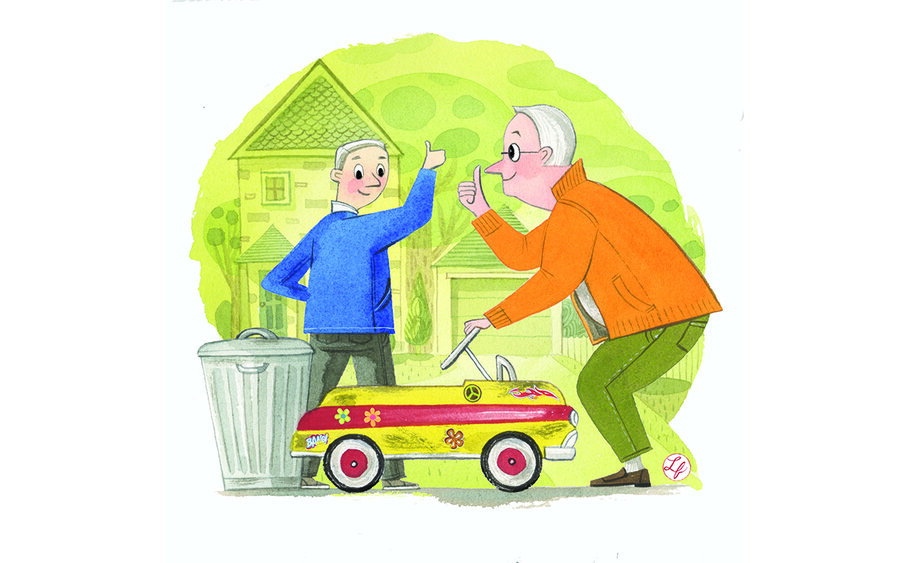A little toy car’s cycle of happiness
Loading...
All I could hear was laughter from a little boy and the rumbling of wheels from the little red-and-yellow ride-on car I’d given up because my grandchildren simply grew up. Even though I live four houses down from my new neighbor, I could easily hear the sounds from their driveway. I smiled and remembered back a few years when my grandchildren had played on that toy car in my driveway.
I didn’t buy the toy car. My niece found it at the end of a driveway in another town, ready to be picked up and thrown away. When she first brought it over, I wasn’t too thrilled because I didn’t understand the concept of giving someone else’s discards to my grandkids. I could afford new toys. But my wife said our granddaughter would love it. I gave in, and of course she turned out to be right.
My wife spent the next day cleaning up the hand-me-down car. She stripped off the old Batman and Superman stickers and replaced them with the kind of flower stickers that were popular during our youth in the 1960s.
We left the new-to-us car in the driveway when our granddaughter came to visit. It was like metal meeting magnet. She jumped out of her parents’ car and ran to it. I showed her how she had to use her feet to make the car go. When I discovered that her legs were too short, I pushed her up and down the driveway and throughout the yard.
We laughed together as I guided her around trees and through the tall grass. Looking back on it now, that is still one of my favorite memories.
Every time our granddaughter visited after that, she’d run into the garage to take out the car. But every time she visited she was also a bit older and a bit larger. I was no longer needed to power her through my yard because now her feet touched the ground. This became one of my more wistful memories. But, after day wandered into evening, she’d put the car back into the garage and give me a big hug because she knew where the car had come from.
A few years later my grandson arrived. When he was old enough to be a little independent, my granddaughter introduced him to the red-and-yellow car. She was getting a bit too big to ride in it, but she was big enough to push him up and down the driveway and through the yard. Watching them, I knew she would remember this time as one of her favorite memories.
I wish I could stop time, but I can’t. Both my grandchildren are now older. Their new toys consist of electronics that don’t have the capacity to move. So I decided to pass along the little red-and-yellow toy car to someone else’s driveway. I am thrilled. Watching and hearing my neighbor’s children love their new toy, I wondered, again, where it had come from. How old was it?
In my mind’s eye I imagine a time when all boys had crew cuts and all girls wore dresses. They must have loved their new toy, and they must have grown up, too. Their parents must have wondered what to do with a too-small ride-on toy. I am grateful they decided to roll it out to the end of their driveway in the hope that some new family would pick it up.
I wonder how many children have enjoyed this toy and how many parents chose to pass it along. At first I was going to walk the car over to my new neighbors so I could tell them they were obliged to walk it to the end of their driveway once their children were through with it, to give it to someone new.
I decided not to. I believe the little red-and-yellow toy car will do it for me.







